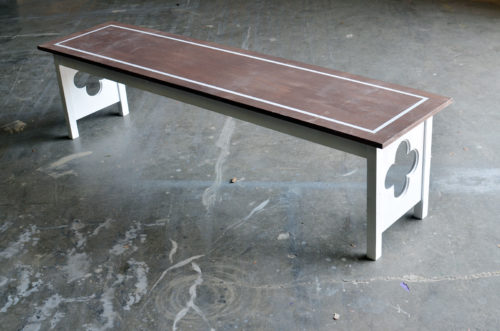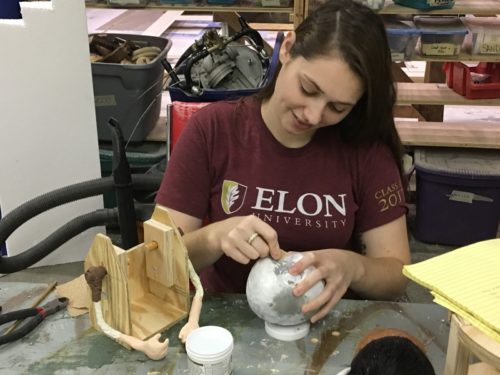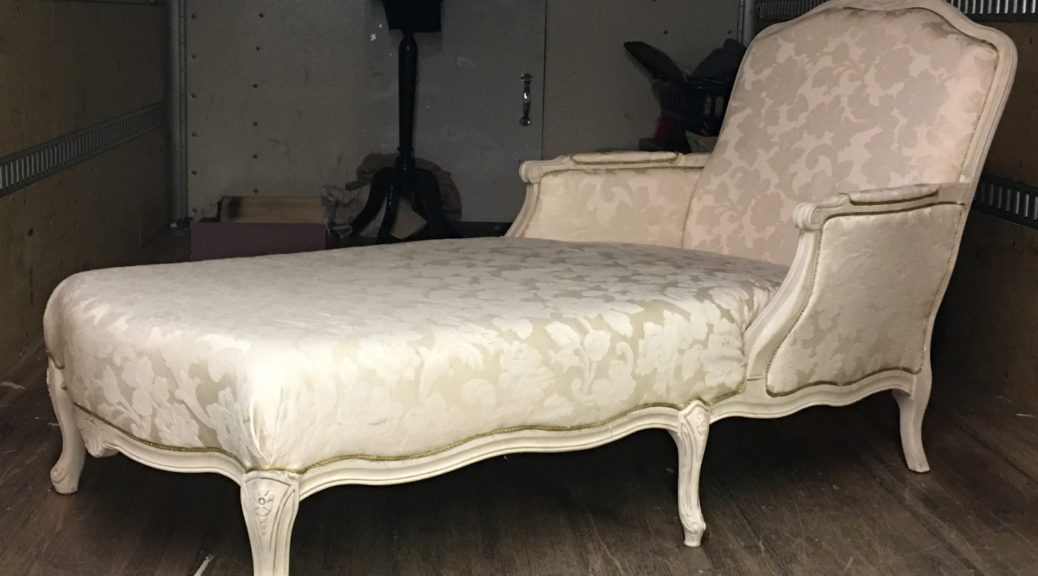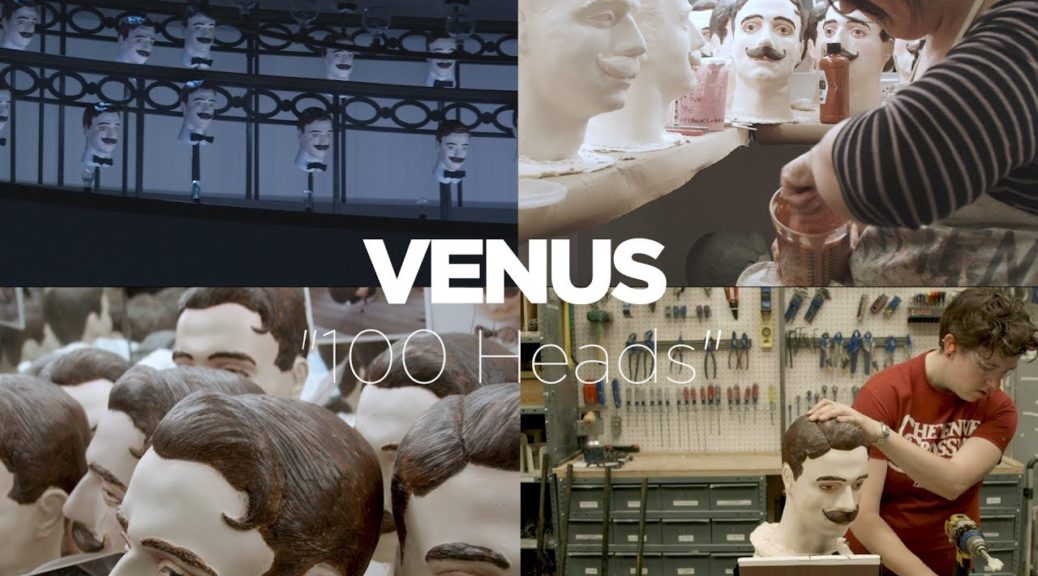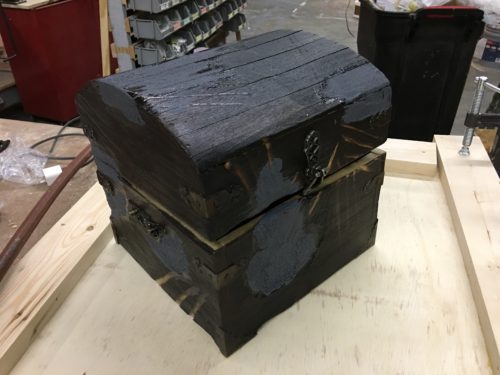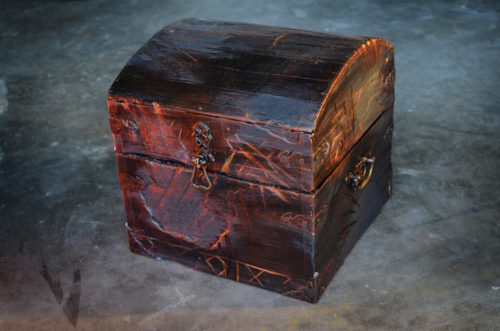A few months ago, Triad Stage put on their Christmas show, Beautiful Star. Though it was a remount, it had some major design changes this year. For the props shop, we needed to build six church benches that could be rearranged throughout the show to create various “locations.”
For the quatrefoil cut-out, I laid out the pattern with a compass and cut it with a jigsaw. I sanded it smooth using a sanding drum that was nearly the same diameter as the individual circles in the pattern.
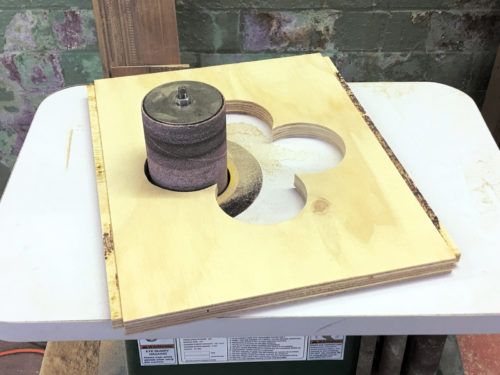
I took the time to make one of the quatrefoils as perfect as possible, and then used a pattern cutting bit on my router to cut the rest of the side panels. I needed twelve panels for the six benches I was making.
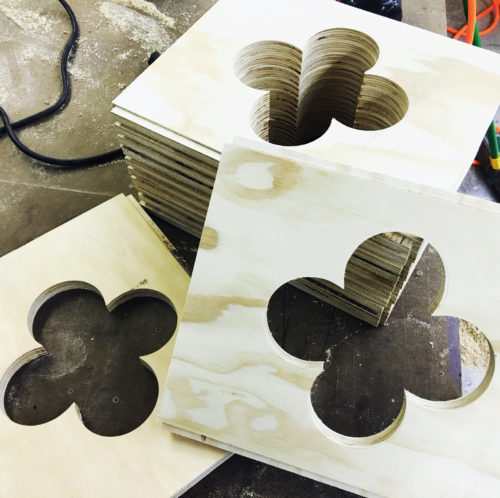
The team wanted the benches to be able to stack on top of each other, sit up on their sides, and otherwise act as instant scenery. They also needed to support the weight of actors standing on them, but be lightweight enough for children to carry them.
I routed a groove down the sides of all the legs. My jig kept the groove in the center of the leg and set stop points for the top and bottom as well. I also cut a tongue on the side panels, which you can see in the previous photos.

In the picture below, you can see I also cut a mortise and tenon for the apron to connect to the leg, and a notch for the leg to fit up into the seat. Additionally, the aprons and side panels were attached to the seat with pocket hole screws. This sucker was going to be strong.
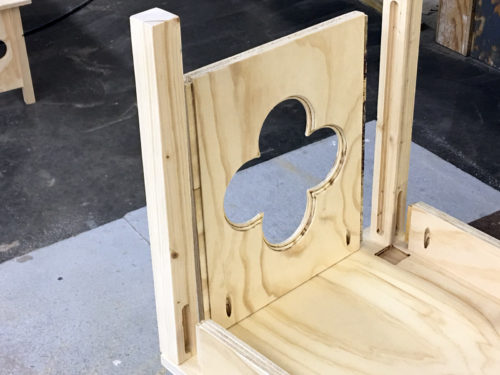
The joints made the whole bench pretty sturdy even without glue, but once it was glued and screwed together, it was rock solid.

We glazed the seat with a dark brown and painted the sides white. During tech we added the white border around the seat to finish off the look. Now we have six lightweight church benches that can be used in a whole host of shows.
